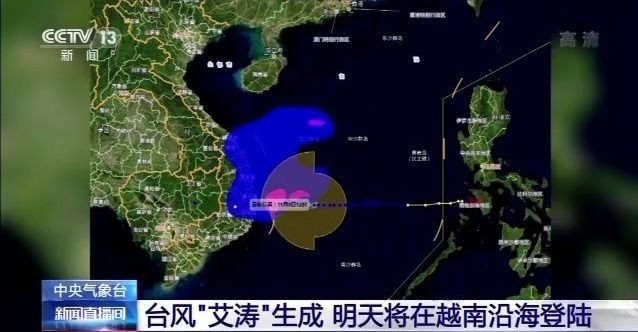AiTao Typhoon
AiTao Typhoon will reach on coast of Vietnam tomorrow !
The tropical depression in the southern part of the South China Sea developed into the 21st typhoon “Ai Tao” in the early morning of today (9th). The Central Meteorological Observatory predicts that AITAO can develop into a strong tropical storm and will make landfall on the southern coast of Vietnam in the daytime tomorrow. Affected by this, strong winds and heavy rains will appear in some sea areas and islands in the southern part of the South my country Sea.
Monitoring by the Central Meteorological Observatory showed that the center of this year’s No. 21 typhoon “Aitao” (tropical storm level) was located at 9 o’clock this morning on the southern South China Sea, about 470 kilometers east of Sansha City (Xishan Yongxing Island), near the center.
The maximum wind force has 8 levels, and the wind speed is 20 meters per second, which belongs to the tropical storm level. It is expected that “Ai Tao” will move westward at a speed of 20-25 kilometers per hour, and its intensity will gradually increase.
The strongest can reach the level of a severe tropical storm with a wind force of 10-11. It will be in southern Vietnam during the day on the 10th. Landing along the coast. After landing, the intensity gradually weakened.
Affected by the typhoon “Ai Tao” and the cold air, from 14:00 today to 14:00 tomorrow, the Taiwan Strait, the Bashi Strait, the northern and western South China Sea, the Zhongsha Islands.
The Paracel Islands, the southern sea surface of the Beibu Gulf, and the central and southern coasts of Fujian and Hainan There will be strong winds of magnitude 7 to 8 on the eastern coast of the island, and the nearby sea where the center of “Ai Tao” passes by has winds of magnitude 9 to 10 and gusts of up to 11 to 12.
In addition, there will be heavy rains in the Zhongsha Islands and Paracel Islands, and heavy rains in some areas of the Paracel Islands, with rainfall reaching 100 to 160 mm.
The Meteorological Department reminded that water operations in relevant waters and passing ships should return to ports for shelter from the wind, and strengthen port facilities to prevent ships from anchoring, stranding or colliding.



